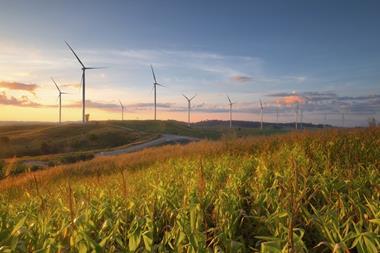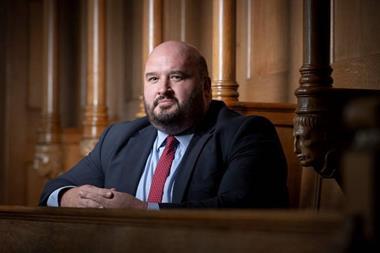The Pension Protection Fund (PPF) has today published its new sustainable strategy, with an ambition to help “catalyse the growth of a more sustainable pensions industry”.
The fund, which protects 10 million defined benefit (DB) scheme members in the UK, has created a sustainable strategy that brings together key elements of the way it approaches responsible investment, diversity and inclusion, and community impact.
The strategy is underpinned by the Five Capitals framework for sustainability, the PPF’s organisational values and an assessment of its most material ESG risks as a business.
It includes:
- having achieved net zero for scope one and two for its direct operations, the fund will aim to reach net zero in its operational supply chain and travel emissions by 2035 or sooner;
- contributing to the global transition to net zero through its investment portfolio and engagement activities;
- year-on-year, achieving an increase in representation across all under-represented groups;
- ensuring that at least 500 days are volunteered across the organisation to support initiatives identified in its sustainability strategy.
- These four goals are expected to demonstrate “excellence” in responsible investment, ensure effective stakeholder engagement with integrity and respect, champion collaboration and leading by example, and be accountable for minimising its own environmental impacts.
Kate Jones, chair of the PPF, said: “As climate change, social inequality, and corporate purpose receive unprecedented global attention, it’s important that we consider material ESG risk and opportunities not only in our investment decisions, but also across all our activities and decisions as a business.”
She believes that by embedding sustainability in the PPF’s business model “we will enhance value for our stakeholders and surrounding communities”.
Jones added that the PPF’s ambition is to “catalyse the growth of a more sustainable pensions industry and lead by example by moving the needle on diversity and inclusion and playing an active role in the communities we work in”.
Church Commissioners’ sustainability report shows farmland to be highest carbon emitter
The Church Commissioners for England has claimed that farmland is the highest carbon emitter, while sustainable forestry absorbs high levels of carbon.
According to its real assets sustainability report published this morning – Our approach to sustainability for real assets – the Church Commissioners’ land and built environment investments are absorbing or avoiding more greenhouse gases than they are emitting.
Infrastructure investments, which focus predominantly on green energy, are helping to avoid emissions and support the transition to a low-carbon economy.
“We recognise the importance of sustainability in our real assets portfolio – both for the portfolio itself, and also as a representation of who we are as responsible investors,” said Paul Jaffe, head of sustainability for real assets at the Church Commissioners.
The institution’s portfolio covers a diverse range of assets – farmland, forestry, development land, built environment and infrastructure – totalling over £2.5bn in value.
Reflecting the commitment to collaboration and engagement, the Commissioners’ team visited more than half of the farms in its portfolio, and met with tenants to discuss their businesses and environmental aspirations, and identify potential future initiatives.
The report outlines the strategic framework in approaching sustainability, lists key challenges, estimates current emissions, and gives examples of recent initiatives and next steps.
In 2022, all of the Church Commissioners’ forestry investments were certified as sustainable. More than 12 million trees were planted in the past five years, doubling the area of native woodland across the Church Commissioners’ forests in the UK. Meanwhile, over £250m has been committed to green infrastructure and social impact initiatives.
The latest digital edition of IPE’s magazine is now available





































No comments yet